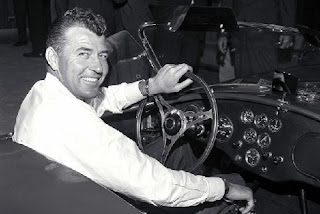Good 40º morning.
Yesterday we got blue sky and sunshine and we topped at 67º.
Picture of the Day
Interesting about the Tower of London and Ravens...
The Ravens of the Tower of London are a group of at least six captive ravens that live on the Tower of London. Their presence is traditionally believed to protect The Crown and the Tower; a superstition holds that "if the Tower of London ravens are lost or fly away, the Crown will fall and Britain with it." There are currently seven ravens at the Tower today (the required six plus one spare!). To prevent the birds flying away, one of their wings is clipped by the Ravenmaster. By unbalancing their flight it ensures that they don’t stray too far from the Tower.
The Tower of London, one of the most historic sites the city has to offer, gets thousands of visitors annually. Many come to see the crown jewels. But another mainstay exists at the Tower of London: ravens. The birds live in the tower and have for centuries. Read on to find out why.
King Charles II wanted ravens protected...
During his reign, King Charles II insisted the ravens in the tower receive protection, according to Historic Royal Palaces. His astronomer, John Flamsteed, was not happy with the king’s decision because the ravens caused problems for him in the tower’s observatory. Nevertheless, King Charles II got protection for the ravens.
The person who protects and takes care of the ravens is known as the “ravenmaster.” The current ravenmaster is Christopher Skaife, according to Mental Floss. Working at the tower for more than a decade, he makes sure the ravens are safe and healthy. Two of his duties include feeding the ravens and waking them up. “It’s absolutely my favourite time of the day,” Skaife said of the early mornings at the tower on Twitter.
Becoming a ravenmaster calls for certain qualifications. First, the ravenmaster must have been a member of the military for 22 years. The same goes for all guardians of the tower, known as the Yeoman Warders.
Skaife has 24 years of military service as a machine-gun specialist. He’s also an expert in survival and interrogation resistance, according to Mental Floss. Additionally, Skaife had to undergo a five-year apprenticeship with the previous ravenmaster.
A legend surrounds the birds guarding the Tower of London. The legend says, “Kingdom and the Tower will fall if the six resident ravens ever leave the fortress,” according to Historic Royal Palaces. Today, the tower houses six ravens and one spare. It’s just one of the many superstitions surrounding the British royal family.
Skaife feeds the ravens a special diet of raw meat and blood-soaked cookies, according to Historic Royal Palaces. They also eat “mice and treats snatched from visitors,” Skaife told BuzzFeed. Visitors aren’t encouraged to feed the ravens because they might bite.
The job of the ravens is to protect the tower from other ravens and continue to uphold the legend to ensure the Tower of London and the kingdom don’t fall. Their territories include the Tower Green — where they would’ve seen Anne Boleyn’s execution — the remains of the Coldharbour Gate, the Wall of the Inmost Ward, and the Roman City Wall (South Lawn).
From Mr. Food
Our stick-to-your-ribs Navy Bean Soup gets its long-cooked taste from some pantry shortcuts. As a starter or a meal in itself, it's rich and flavorful, and sure to bowl them over!
- 1 tablespoon vegetable oil
- 1/2 pound ham steak, diced
- 1 cup chopped onion
- 1 carrot, shredded
- 4 (16-ounce) cans navy beans, undrained
- 1 3/4 cups chicken broth
- 1 cup water
- 1/4 teaspoon black pepper
- In a soup pot over medium-high heat, heat oil; add ham, onion, and carrot and saute 3 to 5 minutes, or until onion is tender.
- Stir in remaining ingredients and bring to a boil. Reduce heat to low, cover, and simmer 10 minutes. Uncover and heat 5 more minutes, or until thickened.
Historically this date.......
1943 – World War II: The United States and
United Kingdom give up territorial rights in China
And births this date include....
race car driver, engineer, and businessman,
and screenwriter (d. 2015)
All I know. Nuff said. Have a good Tuesday. Ciao.
xo Sue Mom Bobo
National Milk Day on January 11th commemorates the day many think the first milk deliveries in glass bottles began in the United States. Alexander Campbell of the New York Dairy Company professed to the New York State Senate that his company was the first to make these deliveries in 1878.
The United States and Australia export more milk and milk products than any other country. Those products include cheese, yogurt, ice cream, butter, cream, powdered milk, and much more. Throughout the world, more than 6 billion people consume milk and the products we make from it. One of the reasons is because milk provides nutrients such as calcium, potassium, vitamin B12, and vitamin A.
Production History
During the Middle Ages, people called milk the virtuous white liquor because alcoholic beverages were more reliable than water. In 1863, French chemist and biologist Louis Pasteur made it possible for milk and other food and drinks to be stored for more extended periods. He developed a method of killing harmful bacteria that is now called pasteurization.
In 1884, an American doctor, Hervey Thatcher of New York City, developed the first modern glass milk bottle. He called it the “Thatcher’s Common Sense Milk Jar.” He used a waxed paper disk to seal the milk in the glass bottle. Later, in 1932, plastic-coated paper milk cartons were introduced commercially as a consequence of their invention by Victor W. Farris.
Modern industrial processes use milk to produce casein, whey protein, lactose, condensed milk, powdered milk, and many other food-additive and industrial products.
Animals
The females of all mammal species can, by definition, produce milk. However, cow milk dominates commercial production. In 2011. FAO estimates cows produced 85% of all milk worldwide. Apart from cattle, many kinds of livestock contribute milk used by humans for dairy products. These animals include buffalo, goat, sheep, camel, donkey, horse, reindeer, and yak. Like cattle, their milk produces cream, butter, yogurt, kefir, ice cream, and cheese, too.
HOW TO OBSERVE
The ultimate way to celebrate is with a large glass of milk. However, a serving of anything made with milk would count, too! Does a milkshake sound good to you? We’ve gathered up some other ways to celebrate, too!
- Make your own cheese
- Add chocolate, strawberry, and malted flavorings to your milk. Then blindfold the kids and have a milk tasting!
- Invite a friend for homemade hot chocolate
- While drinking your milk, learn more about the nutrients in milk
NATIONAL MILK DAY HISTORY
In 1915, The International Association of Milk Inspectors submitted a request to Congress in October of 1915 for a resolution naming an observance of National Milk Day. Their request did not suggest a date for the observance. We have no record that the incoming Congress ever presented a resolution for National Milk Day, nor did incoming President Woodrow Wilson ever declare the day.
National Day Calendar continues the search for the creator of the day.














No comments:
Post a Comment